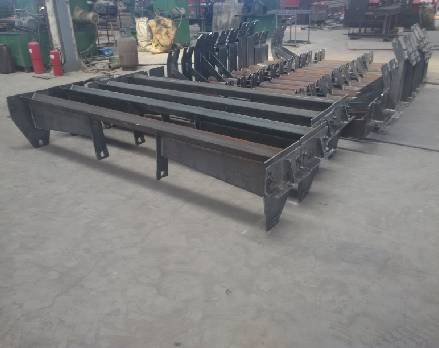 Afrikaans
Afrikaans  Albanian
Albanian  Amharic
Amharic  Arabic
Arabic  Armenian
Armenian  Azerbaijani
Azerbaijani  Basque
Basque  Belarusian
Belarusian  Bengali
Bengali  Bosnian
Bosnian  Bulgarian
Bulgarian  Catalan
Catalan  Cebuano
Cebuano  Corsican
Corsican  Croatian
Croatian  Czech
Czech  Danish
Danish  Dutch
Dutch  English
English  Esperanto
Esperanto  Estonian
Estonian  Finnish
Finnish  French
French  Frisian
Frisian  Galician
Galician  Georgian
Georgian  German
German  Greek
Greek  Gujarati
Gujarati  Haitian Creole
Haitian Creole  hausa
hausa  hawaiian
hawaiian  Hebrew
Hebrew  Hindi
Hindi  Miao
Miao  Hungarian
Hungarian  Icelandic
Icelandic  igbo
igbo  Indonesian
Indonesian  irish
irish  Italian
Italian  Japanese
Japanese  Javanese
Javanese  Kannada
Kannada  kazakh
kazakh  Khmer
Khmer  Rwandese
Rwandese  Korean
Korean  Kurdish
Kurdish  Kyrgyz
Kyrgyz  Lao
Lao  Latin
Latin  Latvian
Latvian  Lithuanian
Lithuanian  Luxembourgish
Luxembourgish  Macedonian
Macedonian  Malgashi
Malgashi  Malay
Malay  Malayalam
Malayalam  Maltese
Maltese  Maori
Maori  Marathi
Marathi  Mongolian
Mongolian  Myanmar
Myanmar  Nepali
Nepali  Norwegian
Norwegian  Norwegian
Norwegian  Occitan
Occitan  Pashto
Pashto  Persian
Persian  Polish
Polish  Portuguese
Portuguese  Punjabi
Punjabi  Romanian
Romanian  Russian
Russian  Samoan
Samoan  Scottish Gaelic
Scottish Gaelic  Serbian
Serbian  Sesotho
Sesotho  Shona
Shona  Sindhi
Sindhi  Sinhala
Sinhala  Slovak
Slovak  Slovenian
Slovenian  Somali
Somali  Spanish
Spanish  Sundanese
Sundanese  Swahili
Swahili  Swedish
Swedish  Tagalog
Tagalog  Tajik
Tajik  Tamil
Tamil  Tatar
Tatar  Telugu
Telugu  Thai
Thai  Turkish
Turkish  Turkmen
Turkmen  Ukrainian
Ukrainian  Urdu
Urdu  Uighur
Uighur  Uzbek
Uzbek  Vietnamese
Vietnamese  Welsh
Welsh  Bantu
Bantu  Yiddish
Yiddish  Yoruba
Yoruba  Zulu
Zulu Return Rollers for Conveyor Belt Systems and Their Importance in Material Handling Efficiency
Understanding Conveyor Belt Return Rollers Key Components for Efficient Material Handling
In the realm of material handling, conveyor systems play a vital role in a diverse array of industries, from mining and manufacturing to logistics and distribution. One of the critical components of these conveyor systems is the return roller, which is essential for the efficient operation and longevity of the conveyor belt. This article delves into the importance of conveyor belt return rollers, their functions, and best practices for maintenance.
What are Conveyor Belt Return Rollers?
Conveyor belt return rollers are part of the conveyor system that support the underside of the conveyor belt as it returns to the loading point. While the carrying idlers transport materials, the return rollers ensure that the belt maintains its shape and tension, preventing sagging and misalignment. Typically, these rollers are positioned at regular intervals along the return path of the belt, offering essential support and facilitating smooth movement.
Functions of Return Rollers
1. Support the Conveyor Belt The primary role of return rollers is to provide support for the return part of the conveyor belt. This support is crucial to maintain the structural integrity of the belt and to avoid unnecessary wear and tear.
2. Maintain Belt Alignment Return rollers help keep the conveyor belt aligned along its intended path. Proper alignment reduces the chances of belt misalignment that can lead to material spillage and potential equipment damage.
3. Reduce Friction Return rollers are designed to minimize friction between the belt and the roller. This reduction in friction allows the conveyor system to operate more efficiently, ultimately saving energy and reducing operational costs.
4. Prevent Material Build-Up By maintaining a smooth return path, these rollers help prevent material build-up on the return side of the belt, which could lead to blockages and interruptions in the material handling process.
Types of Return Rollers
Return rollers come in various types, each suited to specific applications. Common types include
conveyor belt return rollers

- Flat Return Rollers These are the most standard type, featuring a simple cylindrical design that provides basic support
.- Rubber Coated Rollers These rollers have a rubber coating to help reduce slip and improve grip, especially in high-friction applications.
- Return Roller with Cleaning Devices Some return rollers are equipped with cleaning devices to help remove debris and prevent material build-up on the underside of the conveyor belt.
Maintenance Best Practices
To ensure the longevity and effectiveness of conveyor belt return rollers, regular maintenance should not be overlooked. Here are some best practices
1. Regular Inspections Conduct routine inspections of return rollers to identify any significant wear and tear. Early detection of issues can prevent more severe problems in the future.
2. Lubrication Keep the bearings of return rollers well-lubricated. This minimizes friction and helps prevent overheating, which can lead to premature failure.
3. Cleaning Regularly clean return rollers to remove dust, dirt, and debris that can accumulate over time and interfere with roller function.
4. Replace Worn Rollers If any roller shows signs of excessive wear or damage, it should be replaced promptly to prevent interruptions in the material handling process.
Conclusion
Conveyor belt return rollers are indispensable for the smooth operation of conveyor systems. Their ability to support, align, and reduce friction in conveyor belts makes them critical for enhancing overall efficiency in material handling. By implementing regular maintenance practices, industries can ensure the longevity of return rollers, ultimately leading to reduced downtime and lower operational costs. Understanding and appreciating the role of these components can significantly impact the performance of conveyor systems across various sectors, paving the way for improved productivity and streamlined operations.
-
Trusted Conveyor Solutions from Leading Conveyor Idler Roller ManufacturersNewsJun.27,2025
-
Reliable Return Idler Solutions for Efficient Belt Conveyor SystemsNewsJun.27,2025
-
Precision Conveyor Accessories for Streamlined Material HandlingNewsJun.27,2025
-
High-Quality Belt Conveyor Idler Solutions for Efficient Material HandlingNewsJun.27,2025
-
High-Performance Belt Conveyor Pulleys for Reliable Material HandlingNewsJun.27,2025
-
Enhancing Material Handling EfficiencyNewsJun.27,2025





























